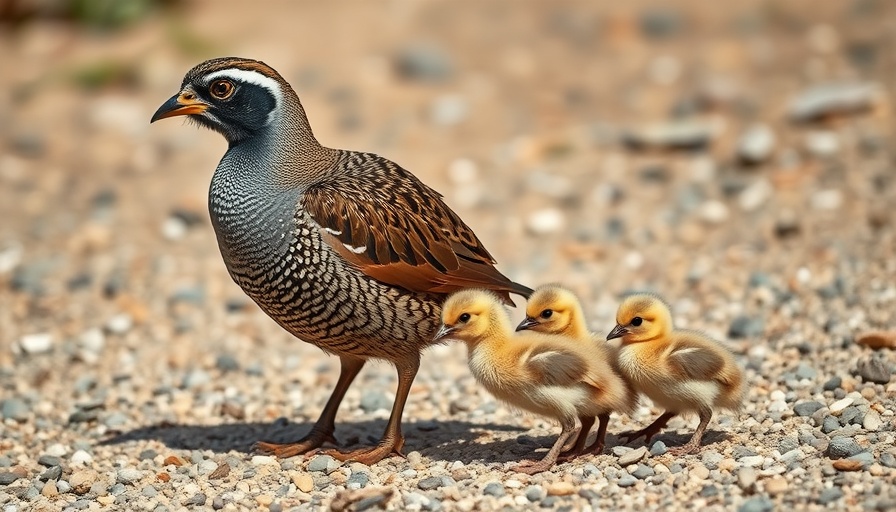
The Charismatic California Quail: Our State Bird
The California Quail, known for its distinct black topknot resembling a small flag, holds a special place in the hearts of many Californians. This charming bird boasts a beautifully patterned gray and rusty-colored body, making it both visually striking and a beloved symbol of the Golden State. Uniquely, the quail's nesting habits are just as captivating as its appearance; they prefer to build nests on the ground, which can surprisingly hold up to twenty-four eggs, sometimes with contributions from multiple females.
Precocial Chicks: Nature’s Little Dynamos
One of the most fascinating aspects of the California Quail is its precocial chicks. Almost immediately after hatching, these tiny chicks are up and running, following their parents tirelessly. Their remarkable ability to forage for food enhances their survival, as they adapt to their surroundings quickly and effectively. This behavior not only emphasizes their resilience but also highlights the critical role parental guidance plays during those early days of life.
Social Structures: The Beauty of a Covey
California Quails often form groups known as coveys, which may consist of multiple families banding together. This remarkable social structure allows them to thrive in their environment. Males take on a significant role in this community, often calling out to gather the flock, making their distinctive "cha-CA-go" sound a familiar anthem in their habitat. Such unity in a covey fosters camaraderie and enhances their chances of evading predators by working together.
Importance of Ground Foraging: A Survival Strategy
While California Quails can fly short distances, they spend the majority of their lives foraging on the ground. This behavioral choice may seem limiting, but it allows for a more significant connection to their environment, underscoring their adaptability. The quail's tendency to scurry into thick brush for safety further exemplifies their resourcefulness in the wild.
Celebrating the California Quail: A Call to Observers
The California Quail’s intriguing habits and social dynamics are not just fascinating facts but also reminders of California’s rich biodiversity. Engaging with nature and observing these charismatic birds can enrich our lives and help in conservation efforts. So, next time you hear that familiar call, take a moment to appreciate the lovely quail and the role it plays in our ecosystem.
 Add Row
Add Row  Add
Add 




Write A Comment